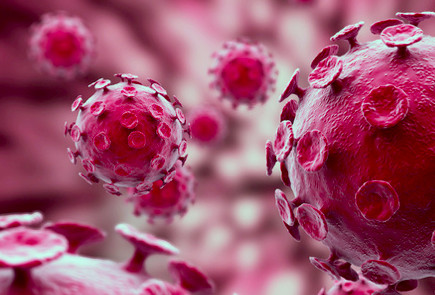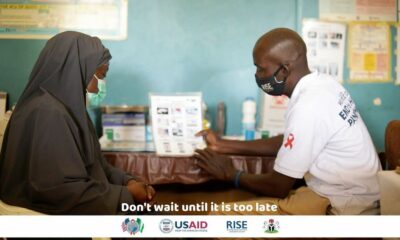Features
Ask Dr. Craig!: Could My Fiancé Have HIV?
 BellaNaija is pleased to announce a new column for our special readers – ‘Ask Dr. Craig!‘ Dr. Craig is a BellaNaija columnist and one of the doctors who writes for BN Doctors’ Lounge {Get familiar here}. The idea behind ‘Ask Dr. Craig!’ is for BN readers to get quick sharp answers to niggling medical issues that they have. This does not in anyway mean that readers should not go to their doctors. However, sometimes you just need a human face to give answers to those fast, burning medical concerns our readers have.
BellaNaija is pleased to announce a new column for our special readers – ‘Ask Dr. Craig!‘ Dr. Craig is a BellaNaija columnist and one of the doctors who writes for BN Doctors’ Lounge {Get familiar here}. The idea behind ‘Ask Dr. Craig!’ is for BN readers to get quick sharp answers to niggling medical issues that they have. This does not in anyway mean that readers should not go to their doctors. However, sometimes you just need a human face to give answers to those fast, burning medical concerns our readers have.
Send your questions for Dr. Craig to features(at)bellanaija(dot)com stating your full name and where you are writing from. (Your name will never be published) The editor reserves the right to edit submissions for content brevity and clarity. We regret that we cannot provide individual answers to questions sent in and cannot state at which exact date answers would be published.
We hope that people will find help by reading and sharing. We look forward to reading your emails and tweets with questions for Dr. Craig.
****
Dear Dr. Craig,
I read a post on Bella Naija (HIV+ Ghanaian Singer/Actress speaks on Contracting Virus, Challenges & Finding Love) where the actress said “At the moment, medically both of us are negative to HIV virus. This is because we have been on (Anti Retro Viral) medication for (a) long (time)”
1. Is her statement true? Can ARVs change a person’s HIV status?
2. What is the essence of having pre-marriage medical to determine if one’s partner is positive when he or she might have been on ARV for a long time?
Miss Getting –Married- Soon, Lagos.
——-
Dear Miss Getting- Married- Soon,
It does seem pretty counterintuitive to rely on tests that may turn out a false negative report, especially seeing that a lot of churches insist on it. However, this tendency to have a negative HIV screening result after prolonged ARV use is actually a documented and well known phenomenon.
To best understand this we must first look at how the HIV virus is tested for.
 Rapid Test Kits (ELISA)
Rapid Test Kits (ELISA)
When a person gets infected by any virus, the body responds by producing antibodies to the virus. These antibodies are part of the body’s defence system and are specific to each virus. So for example, if a person gets infected with Measles, their body produces measles antibodies to fight the infection.
Most common rapid test kits for detecting HIV check for the antibodies produced in response to the virus and NOT the virus itself. These tests are used for screening purposes only and not for diagnosis.
Because it takes about 2 weeks to 6 months for there to be a detectable quantity of antibodies in the blood, there is what we call a ‘window period’. This is a time where even though a person is infected, screening test results would return negative. However, after the body has had enough time to produce the antibodies, a further test will be positive and this now shows the true screening status of the patient. This is why patients are advised to do a repeat screen every six months.
It is also important to note that antibody production is determined by the immune system of the patient and persons whose immune systems are weak will be unable to mount a suitable antibody response. Tests done on such persons may also be negative.
(After one positive result with ELISA, another is done to double check. If still positive the patient is referred for a confirmatory test called Western Blot.)
PCR or Polymerase Chain Reaction test
The PCR or Polymerase Chain Reaction tests for the actual virus itself. In this test the patient’s blood is put in a machine that replicates the virus DNA/ RNA and can accurately detect the presence of the infection in a patient’s blood.
The PCR test is not only able to detect categorically the presence of the HIV virus but can also determine what is called a ‘Viral Load’. The Viral load test measures the numbers of copies of the virus that are present in a millimetre of the patient’s blood. Viral loads can be as high as 1 million or more and the higher the viral load, the more infective a person is.
In addition to Western Blot, the PCR is the only confirmatory/diagnostic test for HIV
Why don’t we do PCR for everyone then? Why bother with ELISA when we know it may return unreliable results.
Well, PCR is a technical test and requires highly skilled technicians to conduct. It is also many times more expensive than ELISA and as such it would neither be economical nor feasible to test everyone if this were the only test available
CD4 Count
CD4 is the name given to a type of cell in the body that plays a key role in immunity. The HIV virus attacks the CD4 cells and kills them off. As they decrease in number, the immunity of the patient steadily declines. It is this loss of CD4 cells that makes patients with HIV prone to many opportunistic infections like TB, Varicella, Pneumonia and various skin diseases.
CD4 count is a test done to quantify the number of CD4 cells in a person’s blood.
For persons who have been diagnosed with HIV, the CD4 count is a useful tool for measuring the progression of the disease. The lower the CD4 count, the more likely the person is to develop full blown AIDS
Summary
It is important to note that it is quite possible for persons to test negative after first of all testing positive to HIV. If the replication of the virus is being controlled by ARVs then theoretically there would be a reduction in the production of antibodies. This can create a similar situation as is encountered in the window period where the virus exists but is undetectable by antibody tests.
Even the PCR test can return ‘negative’ when there are undetectable levels of HIV in a known HIV patient who is on ARVs. What this means is that the viral load has gone below 500 (for the older less sensitive machines) or 20 (for the newer more sensitive machines)
In conclusion
I personally feel that couples should be upfront and honest with each other. Have the talk about STDs and HIV with your partner long before your wedding date. Even things like past infections with herpes, gonorrhoea, chlamidia and syphilis are all relevant and must be discussed thoroughly before hand.
If you are waiting until the premarital STD/HIV screening, then you are waiting too long. Undiagnosed persons in the window period as well as confirmed cases with a low or undetectable viral load can still infect others.
It is possible for a HIV positive mother to have a HIV negative baby if the baby is born by Caesarean Section. A couple who both have HIV are still advised to use protection during sexual intercourse to prevent cross infection.
I hope you found this useful.
Disclaimer: This column is written for patient education. It is not intended to diagnose or prescribe treatment and does not replace the advice of your physician. It in no means attempts to cover the full medical scope of this condition.
























